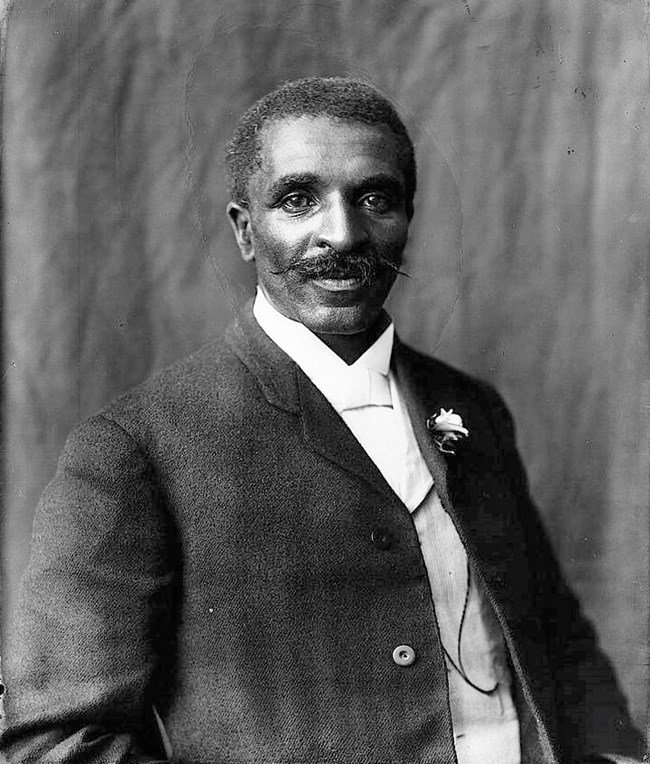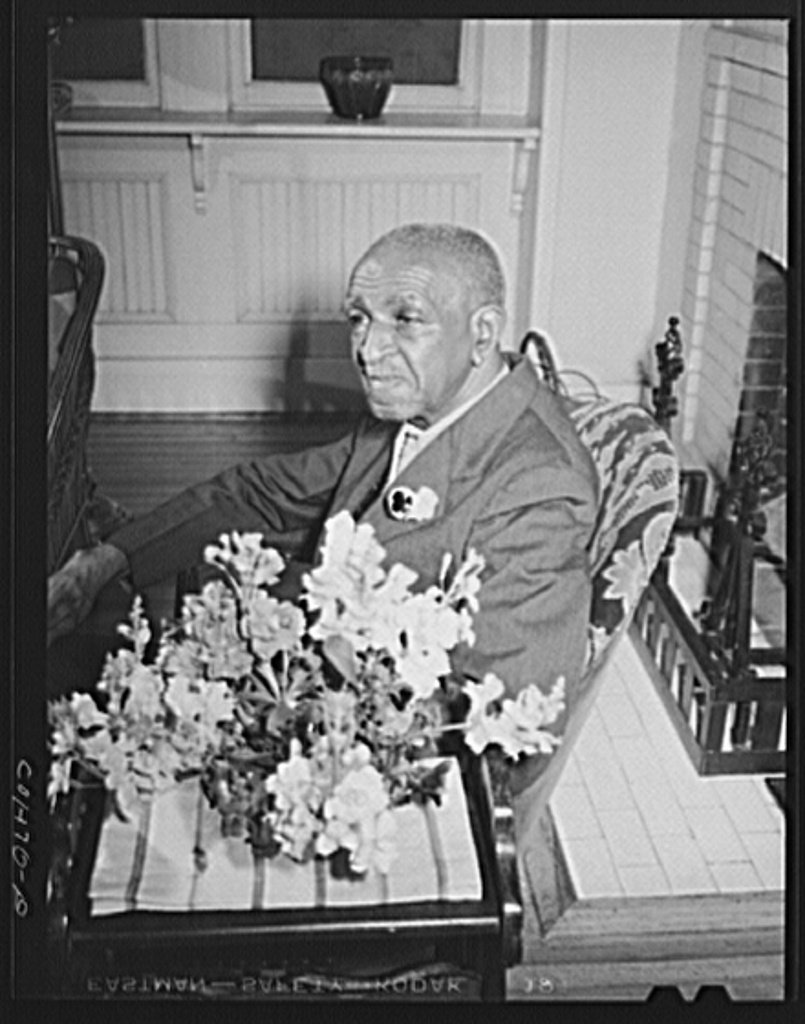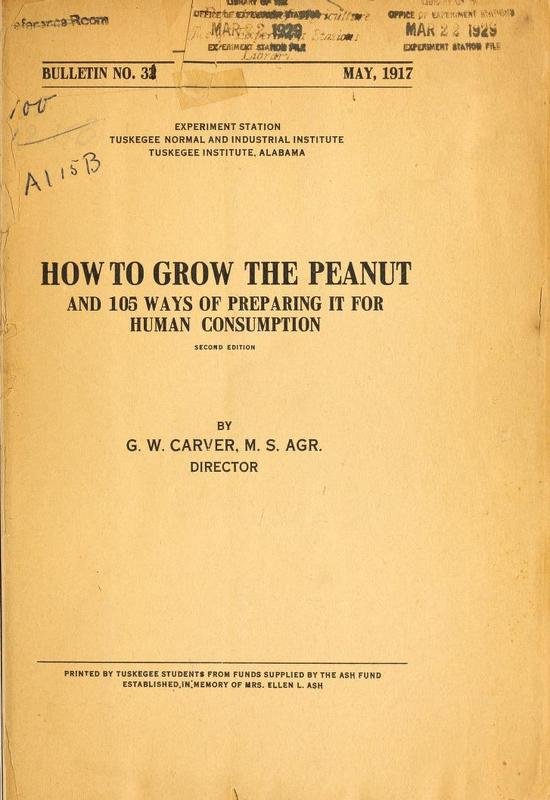George Washington Carver: Scientist, Educator, and Humanitarian
"The primary idea in all my work was to help the farmer and fill the poor man’s empty dinner pail … My idea is to help the ‘man farthest down.’ This is why I have made every process as simple as I could to put it within his reach."
— George Washington Carver
Born into slavery around 1864, George Washington Carver rose to become one of the most influential scientists, educators, and humanitarians of his time. His lifelong dedication to agricultural research and education transformed farming practices, improving the lives of African American farmers and rural communities in the South.
Carver’s deep understanding of the natural world began in childhood, and he spent his life seeking practical solutions to help struggling farmers become self-sufficient. His innovations in crop rotation, soil enrichment, and plant-based products laid the foundation for sustainable agriculture.
The Early Years: A Passion for Nature
"The Great Creator… permits me to speak to Him through… the animals, mineral, and vegetable kingdoms."
— George Washington Carver
Carver was born on a small farm in Diamond, Missouri, near the end of the Civil War. As a child, he developed an early fascination with plants, often taking long walks to observe nature and collect specimens. His curiosity and love for learning earned him the nickname “The Plant Doctor.”
Religion also played a significant role in his life, inspiring his work and bridging racial and social divides. He saw his scientific discoveries as a way to serve humanity, believing that all knowledge was a reflection of the divine.
A Scientist and an Artist
"When you can do the common things of life in an uncommon way, you will command the attention of the world."
— George Washington Carver
Carver never abandoned his love for art. One of his paintings even won Honorable Mention at the 1893 Chicago World’s Fair. He also experimented with natural dyes, crafting paints from local clay and plants, and encouraged farmers to improve their homes with attractive, affordable colors.
Beyond painting, Carver was skilled in needlework, knitting, and crafting—practical skills that reflected his lifelong creativity and resourcefulness.
Revolutionizing Agriculture
At a time when Southern soil was depleted from years of cotton farming, Carver championed crop rotation—alternating cotton with nitrogen-rich crops like peanuts, sweet potatoes, and soybeans—to restore soil health. His research led to over 300 uses for peanuts and hundreds more for sweet potatoes, pecans, and other crops, including:
Peanut-based products: cooking oil, soap, cosmetics, rubber substitutes
Sweet potato innovations: flour, ink, rubber, adhesive
Natural fertilizers and soil enrichment techniques
Despite popular myths, Carver did not "invent peanut butter," but he did play a crucial role in popularizing peanuts and their agricultural benefits.
Later Years and Legacy
In his later years, Carver dedicated himself to public speaking, writing, and mentoring. He turned down high salaries and lucrative offers, choosing instead to serve humanity. In 1940, he donated his life savings of $60,000 to establish the George Washington Carver Research Foundation at Tuskegee.
Carver passed away on January 5, 1943, and was buried next to Booker T. Washington at Tuskegee Institute. His epitaph reads:
"He could have added fortune to his fame, but caring for neither, he found happiness and honor in being helpful to the world."
“How far you go in life depends on you being tender with the young, compassionate with the aged, sympathetic with the striving and tolerant of the weak and strong. Because someday in your life you will have been all of these.”
-George Washington Carver
The George Washington Carver statue greeting visitors to the Carver Museum is an exhibit all to itself. The sculpture, Mr. Ed Dwight, is an internationally acclaimed sculptor whose works grace various venues around the United States. Among his works are major African American historic figures.
The Carver Statue was unveiled on February 15, 2004, in a ceremony where Governor Janet Napolitano, among many others, addressed the crowd. The artist, Ed Dwight, spoke movingly before the unveiling. There were musical presentations and acknowledgments of many distinguished guests. Visitors who have viewed and photographed the statue have praised its artistry.
The Carver Statue is an artistic achievement and a worthy monument to its namesake. This exquisite work faithfully captures Carver’s delicate features and somehow reflects the genius and hope that defined the man.
A Legacy of Education and Innovation
"It has always been the one ideal of my life to be of the greatest good to the greatest number of my people possible, and to this end I have been preparing myself for these many years, feeling as I do that this line of education is the key."
— George Washington Carver
In 1896, Booker T. Washington invited Carver to teach at Tuskegee Institute in Alabama, where he spent more than 40 years educating students and developing agricultural research programs. Carver emphasized hands-on learning and the power of education in securing economic independence. He believed in equipping farmers—both Black and white—with practical knowledge to improve their livelihoods.
The Road to Education
"If you love it enough, anything will talk to you."
— George Washington Carver
In the late 1800s, racial segregation kept African Americans out of most schools, but Carver pursued his education whenever and wherever he could. His determination led him to Simpson College in Iowa in 1890, where he initially studied art. Though his talent was undeniable, he ultimately shifted to agricultural studies at Iowa State Agricultural College (now Iowa State University), believing that science could make a greater impact on the lives of African Americans.
At Iowa State, Carver became the first Black student and later the first Black faculty member. He excelled in botany, soil science, and agricultural experimentation, laying the groundwork for his future career.
Teaching at Tuskegee: Education as Empowerment
"Education is the key to unlock the golden door of freedom."
— George Washington Carver
In 1896, Booker T. Washington hired Carver to lead Tuskegee Institute’s Agriculture Department, where he taught for 47 years. Through hands-on education and innovative farming techniques, he helped generations of students and farmers gain economic independence.
Carver’s “Jesup Wagon,” a mobile classroom funded by philanthropist Morris Jesup, took agricultural education directly to farmers. This “School on Wheels” eventually evolved into Tuskegee’s agricultural extension service, providing rural communities with practical demonstrations in farming, nutrition, and home improvement.
Advocating for Sustainability and Racial Harmony
Carver’s work extended beyond science—he was a mentor, humanitarian, and advocate for racial reconciliation. He believed in economic empowerment through education and urged cooperation between Black and white farmers. His scientific contributions were recognized by business leaders, including Henry Ford and President Theodore Roosevelt, and he advised on agricultural policies that shaped the future of farming.
George Washington Carver’s work, which began to aid the poorest farmers, transformed Southern agriculture and became an enduring inspiration.
Born into slavery, Carver was originally referred to as "Carver’s George," a label reflecting ownership rather than identity. While pursuing his education, he stayed with the Watkins family, where Mrs. Watkins insisted he adopt a proper name—thus, he became George Carver.
Similarly, Carver High School in Phoenix evolved in name and purpose. Established in 1925 as Phoenix Union Colored High School, it later became Phoenix Colored High School in 1940. Following Carver’s passing on January 5, 1943, the school was renamed in his honor. A decade later, in 1953, Arizona ruled educational segregation unconstitutional, leading to the school's closure the following year.
Why is Carver’s name so widely honored? He became a symbol of African American intellectual achievement, advancing agricultural education at a time when farming was central to American life. Many credit him with revitalizing Southern agriculture and improving food security. His lifelong mission was simple yet profound: to serve humanity, uplift Black farmers, and promote self-sufficiency for all.
Explore Our Virtual Exhibits















